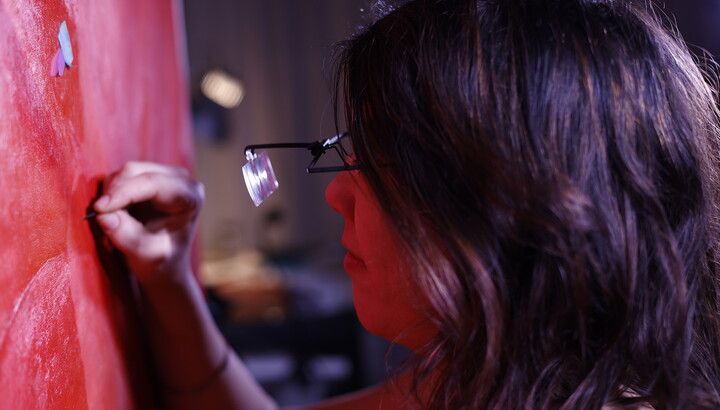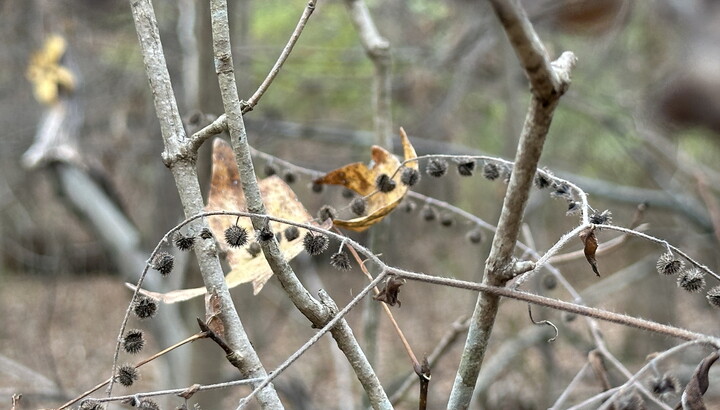The Carter Blog
Carter ARTicles
Behind the lens: Jeremy Dennis on Nothing Happened Here
Nov 07, 2022
Jeremy Dennis is a Shinnecock artist living and working in present-day Eastern Long Island, NY. Through cinematic images that disrupt the ever-present and often damaging post-colonial narrative that dominates film and media, Dennis’ work explores Indigenous identity, cultural assimilation, and the traditional, ancestral practices of the Shinnecock Indian Nation. Several works by Dennis are currently on view in the Carter-organized exhibition Speaking with Light: Contemporary Indigenous Photography. We had the opportunity to chat with Dennis about Nothing Happened Here #10, on view in the exhibition through January 22.
On Dennis’ work:
JD: My work might entail simply retelling stories that may have been overlooked or marginalized. It could be celebrating them in new ways. It may analyze history for how it was written and try to interpret or incorporate Indigenous voices today. I really enjoy looking at history, archives, and library collections and creating images that explain, represent, or in some cases, simply re-enact moments in our shared past as Shinnecock or native people.
We live in a place known in popular culture as the Hamptons. Most people have this vision that the Hamptons are mansions, beaches, parties, and that’s it. But the Shinnecock have been here as a people for more than 10,000 years. For me, my work has a really simple mission of letting people know we are here.
The big irony is that we have this incredible story of resilience and ties to the land. Yet, today in the 21st century, even our neighbors in South Hampton and other East End villages often don’t know we’re still here as a people. So, as an individual in this community that I am proud to be a part of, I really enjoy telling people the fact that we’re still here through our stories—past and present—and through portraiture, landscape photography, and other means.
On the creative process behind the Nothing Happened Here series:
JD: When I started this project in 2016 in my mid-20s, it was the first time I was really starting to learn about my ancestral history. I began to get a little bit confused and angry at how all of this knowledge has just been omitted from social studies, school curriculums, history classes. I created the Nothing Happened Here series as a response to that.
In each of the images, different individuals have arrows sticking out of their bodies. If you look at the title, Nothing Happened Here, and you look at the image, it has a juxtaposition: obviously, something is happening in these images. It makes you wonder, why is the artist trying to make that argument?
I’m trying to point out that we all occupy this land and like to claim as a nation that nothing really happened here before the Founding Fathers, but there are more than 100 years that happened before that we aren’t really proud of. I wanted to use these arrows as a parallel for that idea, but I also wanted to create a tangible and visual burden.
We might know general histories of Indigenous genocide in this country, the Trail of Tears, or stories of Indigenous boarding schools, but we do not learn about local histories or how we’re connected to them. I really wanted to suggest that we are all carrying this weight, or burden—of this shared knowledge that we’ve never had any meaningful reconciliation over. We’ve never really had any meaningful land-back initiatives or any federal or government-wide acknowledgement of these histories. And even today, even though the education system curriculums are incorporating this history, I think there’s still so much work to be done.
On what he envisions visitors taking away after viewing this series:
JD: I want this project to start a conversation with viewers and make them feel like there can be change, that there is something that needs to be done, and that they do have a connection to Native Americans.
It is something I think about all the time. How can I make more connections? How can I bridge gaps in communities? How do we come together as human beings and show our shared humanity?
Even though the images are violent and a little bit shocking, they are supposed to talk about our shared trauma and pain, our shared history.
On what visitors should notice in Nothing Happened Here #10:
JD: These people are clearly impaled by arrows. That’s a very painful thing to endure, but if you look at the individuals in these photographs, their faces are very calm and contemplative.
When I think of the expression on these figures’ faces in the Nothing Happened Here series, I think that this is the moment that they think about our history, about Indigenous people.
Sometimes, as a native person, we like to create the narrative that the United States is the greatest country in the world. We’ve gone to the moon and we’ve done all these achievements. But what is the foundation of all these accomplishments that we’ve never spoken about or agreed upon? I think everything always connects back to us as Indigenous people. I also think about this commonality everywhere in the country: this is all Indigenous land, yet we are no longer stewards of the land.
I want this understanding to be what people take away. I don’t want people to think about Indigenous people just when they see this art. I want them to think about them long term. How can they as individuals be part of the change? I want there to be long-term engagement.





